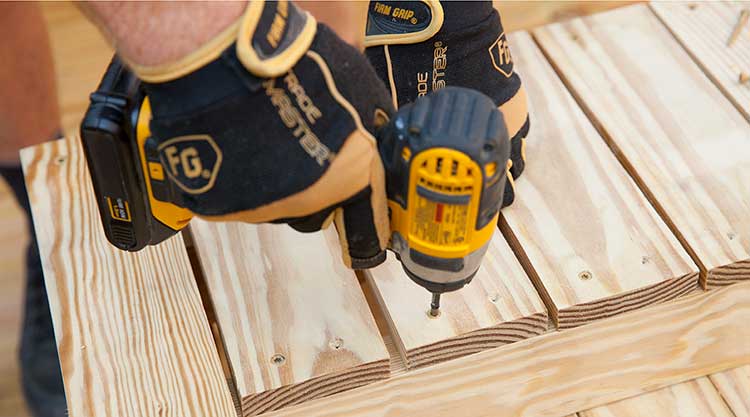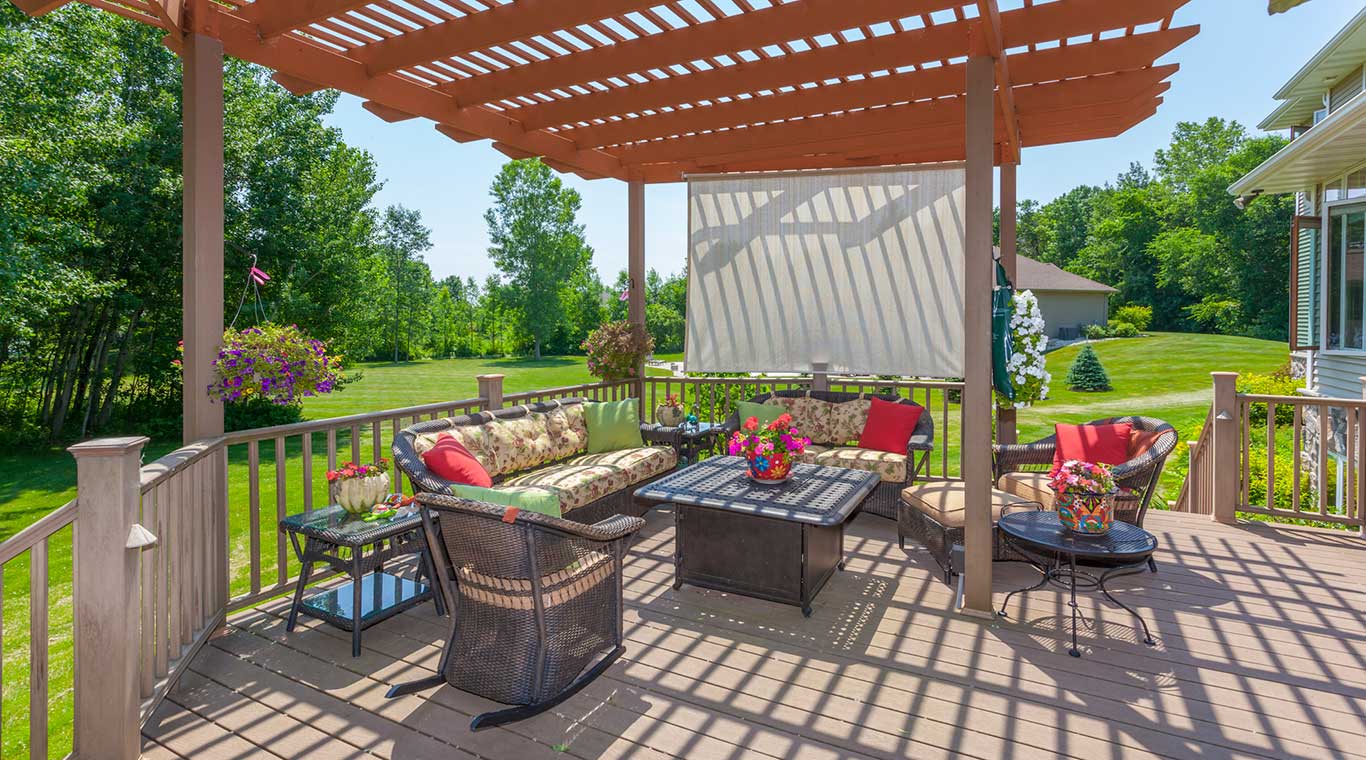
FAQs About Pressure Treated Lumber
Some frequently asked questions about pressure treated lumber:
What is pressure treated lumber?
Pressure treated lumber products, such as YellaWood® brand products, are treated in a pressurized cylinder. The treatment process forces a waterborne preservative deep into the cellular structure of the wood providing long-term protection against rot, fungal decay and termite attack.
What preservatives are used with pressure treated lumber?
YellaWood® brand products are treated with a micronized copper preservative and a co-biocide. They are treated using the MicroPro®preservative process, the first wood preservative process to be certified as an Environmentally Preferable Product (EPP) by Scientific Certification Systems (SCS).
How do I know which product to use in which application?
YellaWood® brand products are available in a number of different treatments for a variety of applications. Simply by reading the end tag on each piece of lumber, the end user will be able to determine if a product is approved for use in "above ground" or "ground contact" applications.
What does "ground contact" mean?
Ground contact means that the product is approved for use in applications that require the component to be either placed on or directly in the ground (fence or deck posts; landscaping). Ground contact also applies to products used in above-ground applications when the components are subject to hazards comparable to ground contact or are used in applications that are difficult to maintain, repair or replace and are critical to the performance and safety of the structure (deck joists, beams, ledger boards, etc.) More information on these specific applications is available on our Retention page.
When I cut some pressure treated boards, the middle looks like it hasn't been treated. Is this a bad piece of wood?
No. Typically, this is the heartwood of the tree. These cells are naturally decay-resistant, and it is not an indication that the product was improperly treated.
What fasteners are recommended for pressure treated lumber?
Selecting the right fasteners will help ensure the longevity of your project. Use hot-dip galvanized or other fasteners as required by local building codes. Galvanized and stainless steel fasteners are corrosion-resistant and will not stain your project. Follow the manufacturer's recommendations.
Is aluminum contact allowed with pressure treated lumber?
YellaWood® brand products can be placed in contact with aluminum in code-compliant construction applications that provide proper water drainage and do not allow the wood to be exposed to standing water or water immersion.
Is it safe to use pressure treated wood around plants and animals?
YellaWood® brand products are treated with an EPP-certified preservative and are safe to use around plants and animals.
Can YellaWood® pressure treated wood be used in gardens?
Yes. Scientific studies have proven that any copper that may migrate from the treated wood becomes biologically inactive, thus causing no eco-toxic or other environmental impacts. YellaWood® brand products are gentle enough to be used in raised vegetable gardens and durable enough to provide long-term protection.
If my project has become gray and has some surface mold on it, what can I do to restore it?
A simple solution of mild soap and a pressure washer will help clean your project of surface mold and dirt. There are also specific products at your local dealer that are made especially for cleaning pressure treated products. Keep in mind that surface mold in no way affects the decay-resistant properties of your project. After cleaning, a water repellent or a stain with water repellent can be applied to help reduce weathering of your project.
When can I paint or stain my project?
Perform the following test to determine if your project is ready to paint or stain: Place a few drops of water on the area to be coated. If it beads up, it is too wet to coat, and you'll need to wait. If it absorbs the water readily, it is ready to coat. If you want to paint your project, use an oil-based primer and a high-quality acrylic (latex) paint. If you want a stained look, a high-quality stain is recommended. Always check with the manufacturer before applying and follow their instructions. Get more info on sealing, painting and staining.
When can I apply a water repellent to pressure treated wood?
If you plan to let your deck's natural appearance and color shine, it is recommended that you apply a water repellent as soon after installation is complete as is possible. This added protection will help the wood's natural beauty last longer.
Can I find different grades of YellaWood®?
Yes, YellaWood® is available in multiple lumber grades to meet the needs of any job. You can find the grade noted on the ink stamp that is applied by the sawmill. Most building supply stores stock only a few grades of lumber, but a wider variety of grades can be special-ordered. Learn more about dimensional and decking lumber grades in this simple guide.
What is kiln dried (KDAT) wood?
Following pressure treatment, KDAT products are placed in a large oven, or kiln, where excess moisture is removed and the wood is returned to its original moisture content. Because the kiln offers a controlled environment and the wood is dried evenly, this process helps minimize the natural tendency of freshly treated wood to shrink, cup and warp. See more information on KDAT and its benefits.
Can I use landscape timbers as a fence post?
Landscape timbers are not recommended for use as a fence post because they are not treated for ground contact and do not carry a warranty.
What maintenance is needed?
Even though no maintenance is needed to retain the treated lumber's resistance to rot, fungal decay and termites, a regular maintenance program, including a periodic coating of water repellent, will help maintain the appearance of your project. This will also protect against splitting and checking.
Why does some treated lumber warp?
Warping is a natural tendency of both treated and untreated lumber due to grain patterns that are established during the growth of the tree. Since no tree grows perfectly straight, grain patterns are irregular. Proper storage before and during construction will help minimize the amount of warping.
What causes splitting and checking?
Splitting and checking are caused by moisture transfer between the lumber and the surrounding environment. This constant wetting and drying of exposed surfaces causes stress on the lumber that can create cracks and grain separation. Use of a water repellent will help reduce the natural tendency of wood to split and crack as it dries.
How do I remove an ink stamp?
Many sawmills mark their lumber with an ink stamp that indicates the grade, species, sawmill, grading agency and other information. The grade stamp can be removed with a palm sander.
How should I dispose of scraps?
Preserved wood may be disposed of in landfills or burned in commercial or industrial incinerators or boilers in accordance with federal, state and local regulations.
For answers to other questions you may have about pressure treated lumber, please contact us.
